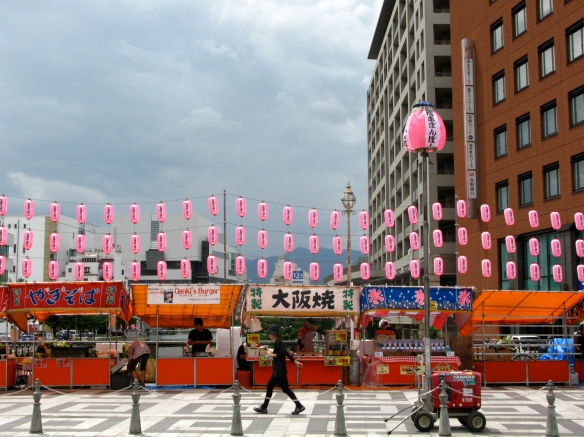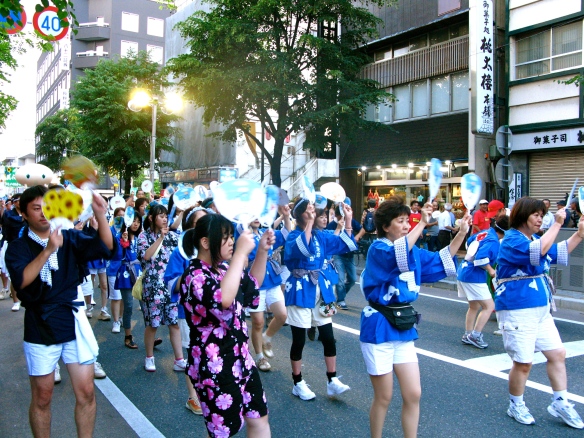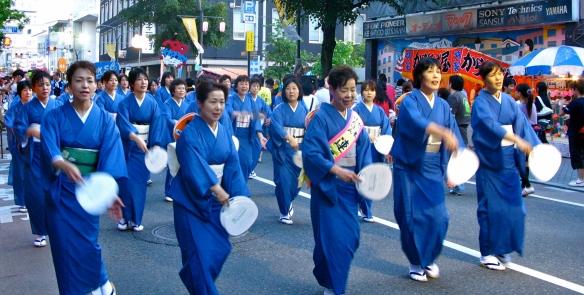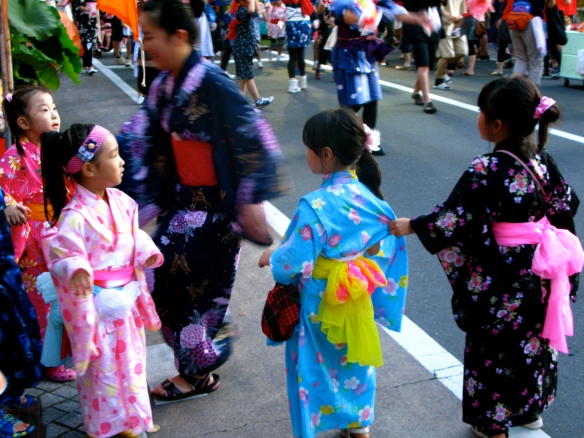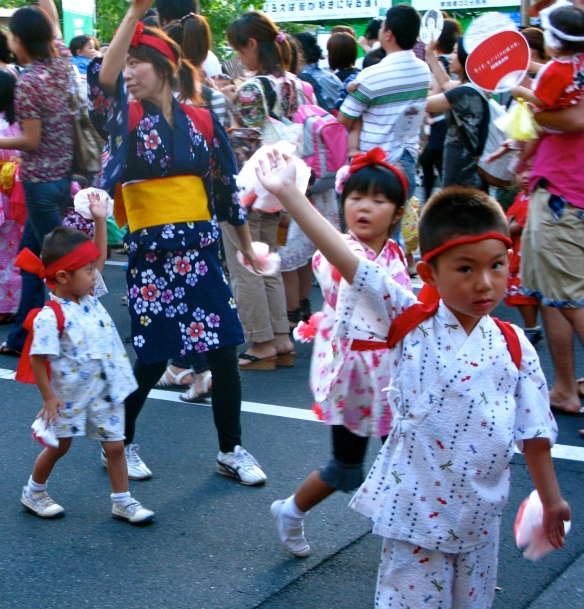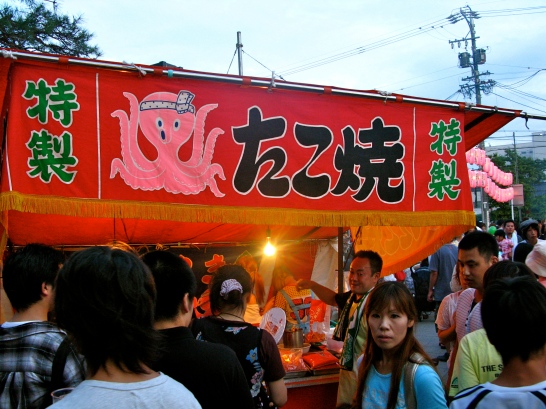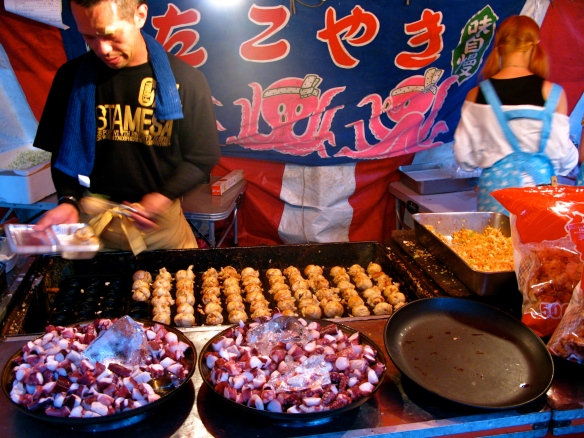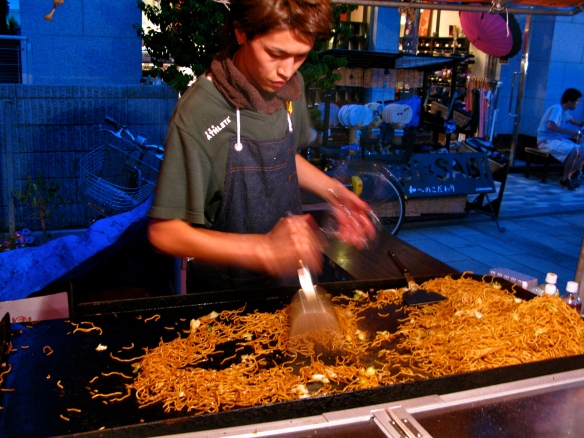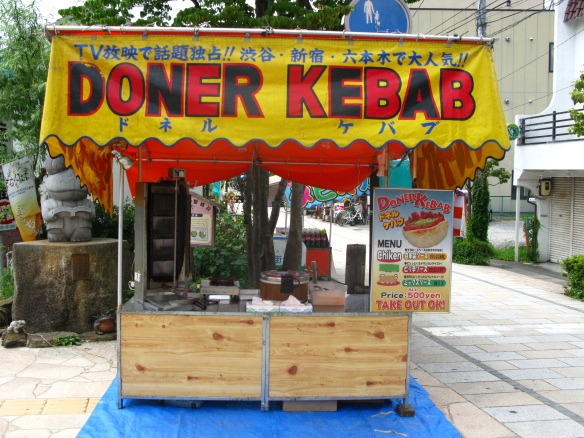When you think of Japan, what are the first things that come to mind? Politeness, sushi, Tokyo, temples, cleanliness, Mt. Fuji — yes, all accurate. But what about delicious street food, throngs of revelers, and costumed people singing and dancing in the streets for hours? Not your image of Japan? Let me explain…
It’s true that life in Japan is quite contained, both physically (in offices, trains, and tiny apartments) and psychologically (in a fairly rigid set of customs and hierarchies). In my experience, most raucousness occurs in the guise of office parties or gatherings at karaoke bars and smoky izakayas.
However, this all changes when the weather warms. Summer in Japan is the season of matsuri, or festivals. These can take many forms, from elaborate processions of portable shrines to gorgeous fireworks displays and taiko drumming performances. Sometimes, mountainsides are set on fire, as in Kyoto’s famous Gozan no Okuribi, and boats are hauled over long distances by festival participants, as in Suwa’s amazing O-fune (boat) matsuri. Japanese festivals are lively, ebullient, and often awe-inspiring events. As it happens, they’re also great places to eat.
Last weekend, Steven and I were able to attend Matsumoto’s largest festival, Matsumoto Bon Bon. (“Bon” here refers to a type of dance known as bon odori.) Several days in advance of the festival, the town was already decked out with the event’s characteristic pink and white lanterns.
When the time came for the festival, every group imaginable turned out to do the Bon Bon…
…even the town’s youngest citizens.
As the evening progressed, the smells of smoke and grease from the food stalls lining the streets lured us away from the dancing. After all, what is a Japanese festival without Japanese street food?
We first sampled takoyaki, octopus-stuffed batter griddled in spherical molds and topped with sweet brown sauce and mayonnaise. Like Danish aebleskiver in form, though of course vastly different in taste, these doughy, chewy treats are a popular street food throughout Japan. Unfortunately, the ones we sampled from this stand were a bit bland and undercooked. Still, it wouldn’t have been a festival without them.
Moving along, we bypassed the yakiton (grilled pork) stand, despite its appealing signage.
Instead, we made a beeline for the nearest yakisoba stand, where a young man was tossing thin, wavy noodles with cabbage, pork, and seasoning sauce at lightning speed. We devoured a chewy, slightly crisp pile of the stuff almost as quickly.
What would a festival be without one of these? Yes, even the ubiquitous doner kebab has made its way to Japan. We tried one, mostly for kicks, and because we were intrigued by the quirkily advertised “Mexican flavor” spicy sauce. Spicy it was not, nor did it evoke the taste of Mexican cuisine, but the meat was appropriately and satisfyingly greasy.
For dessert, a choice awaited: kakigōri (finely shaved ice with flavored syrup)…
…or crêpes? In this case, the choice was easy — we simply couldn’t say no to freshly made crêpes with fillings like matcha cream, yogurt, and sweet red beans. While a far cry from the delicate crêpes one might find in France, the Japanese versions we sampled stood up well to their rich fillings.
Needless to say, the highlight of the night was not the food but the festival itself. How could it not be? Matsumoto, usually subdued, was positively overcome with an infectious energy as the parade wound its way through downtown. Cheesy though it may seem, these festivals help Japanese towns retain their sense of identity and form a living link the past. They’re a sort of social glue, reminding residents that they’re part of something larger and share a common purpose. At these events, the goal may be to have fun, but the result is a lasting sense of unity and camaraderie. Witnessing such an outpouring of civic pride, I couldn’t help but sing and dance along myself.
When was the last time you had this much fun in your city’s streets? Let me know in the comments!


